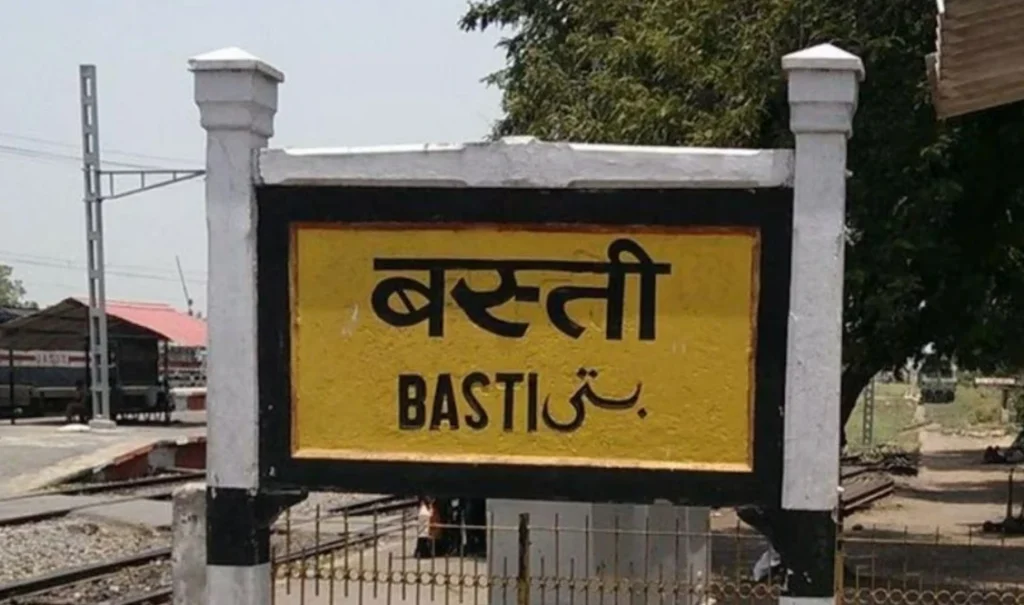Discover Basti District, known for its rich heritage, cultural traditions, and fertile landscapes. Explore ancient temples, historical sites, and agricultural beauty.

Explore Basti: Temples, History & Fertile Landscapes
Nestled in the heart of the Indian state of Uttar Pradesh, Basti District stands as a testament to the rich cultural heritage and historical significance of the region. With a history dating back centuries and a landscape that encompasses both rural tranquility and modern development, Basti District offers a unique blend of tradition and progress.
Geographically, Basti District spans across the eastern part of Uttar Pradesh, sharing its borders with neighboring districts like Gorakhpur, Sant Kabir Nagar, Ambedkar Nagar, and Siddharthnagar. The district is endowed with a diverse topography, ranging from fertile plains to rolling hills, all nourished by the waters of the Ghaghara River, which flows through its heart.
The district’s history can be traced back to ancient times, with references to the region found in various Hindu scriptures and legends. Over the centuries, Basti has witnessed the rise and fall of several dynasties, each leaving its mark on the culture and architecture of the area. The region’s historical significance is evident through its various historical sites and monuments, such as the Basti Fort, which serves as a reminder of the district’s strategic importance during different eras.
Basti District’s cultural tapestry is a harmonious blend of diverse traditions and practices. The people of Basti celebrate a multitude of festivals with great zeal and fervor. From the vibrant colors of Holi to the spiritual aura of Diwali, the district resonates with the sounds of celebrations throughout the year. The traditional art forms of the region, such as the folk music and dance, add a distinct flavor to the cultural landscape.
Agriculture forms the backbone of Basti’s economy, with a majority of the population engaged in farming activities. The fertile plains and abundant water resources support the cultivation of crops like rice, wheat, sugarcane, and pulses. Additionally, the district has a thriving dairy industry, contributing to its economic growth.
In recent years, Basti District has also witnessed infrastructural and developmental advancements. Improved connectivity through road networks has facilitated trade and travel, and the establishment of educational institutions has paved the way for quality education for the youth. Healthcare services have been expanded, ensuring better access to medical facilities for the residents.
The district’s social fabric is woven together by a sense of unity and community bonding. Villages and towns often host local fairs and melas, providing opportunities for people to come together and share their joys and sorrows. The warmth and hospitality of the people make visitors feel welcome, allowing them to immerse themselves in the local way of life.
As Basti District continues to evolve, there is a delicate balance to be maintained between preserving its cultural roots and embracing modernity. Efforts are being made to promote sustainable development and preserve the natural beauty of the region, as well as to empower local artisans and craftsmen to continue practicing their traditional arts.
Famous Places in Basti District
Basti District is home to several famous places that showcase its historical, cultural, and natural beauty. Some of the notable destinations to explore in the district include:
Basti Fort: A historic monument that reflects the district’s strategic significance in different eras. The fort’s architecture and surroundings offer a glimpse into the region’s past.
Ghaghara River: Flowing through the heart of the district, the Ghaghara River not only provides water resources for agriculture but also offers picturesque views and opportunities for leisurely strolls along its banks.
Pura Mahadeva Temple: An ancient Hindu temple dedicated to Lord Shiva, known for its architectural intricacies and religious importance. The temple attracts devotees and architecture enthusiasts alike.
Ashtbhuja Temple: This temple is dedicated to Goddess Durga and is famous for its unique eight-armed idol of the deity. The temple’s serene surroundings make it a popular spot for worship and meditation.
Bahuwa Bazar: A bustling market that offers a taste of the local life, Bahuwa Bazar is a great place to explore traditional crafts, textiles, and local produce.
Bhadeshwar Nath Temple: Known for its beautiful architecture and religious significance, this temple draws both pilgrims and tourists. The annual fair held here adds a festive touch to the temple’s aura.
Ayodhya: While not within the boundaries of Basti District, the neighboring city of Ayodhya holds immense religious significance as the birthplace of Lord Rama. It’s a short distance away and worth a visit for those interested in Hindu mythology and spirituality.
Bird Sanctuary, Dohrighat: For nature enthusiasts, the Bird Sanctuary in Dohrighat offers a chance to observe various bird species in their natural habitat. It’s a peaceful retreat for bird watching and photography.
Siddha Baba Temple: This revered temple is dedicated to Siddha Baba, a local saint known for his spiritual teachings. The temple’s tranquility and spiritual ambiance attract devotees seeking blessings and solace.
Nawabganj Bird Sanctuary: Located on the banks of the Ghaghara River, this sanctuary is a haven for migratory birds. It’s an ideal spot for birdwatchers and nature lovers to witness a diverse range of avian species.
These are just a few of the many attractions that Basti District has to offer. Whether you’re interested in history, spirituality, nature, or local culture, the district presents a variety of experiences that cater to different interests and preferences.
Read More :-
